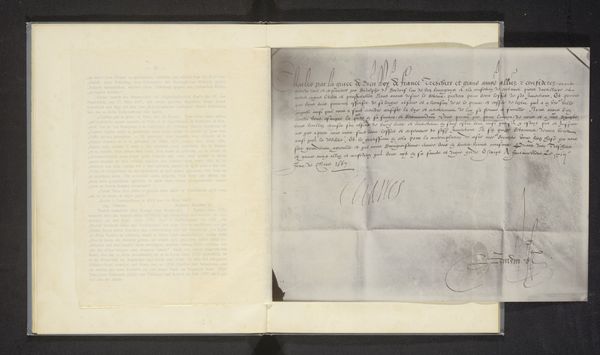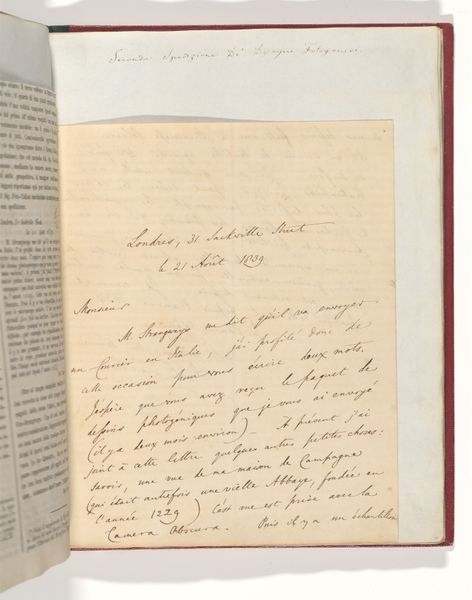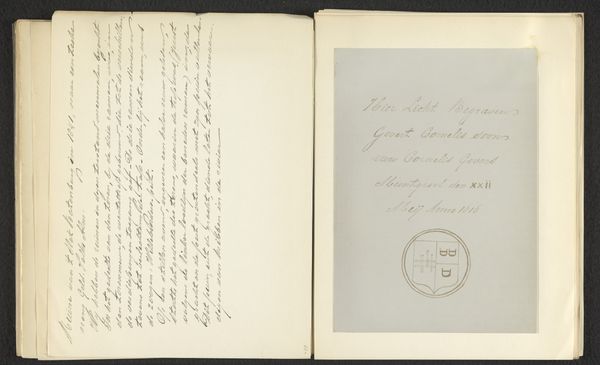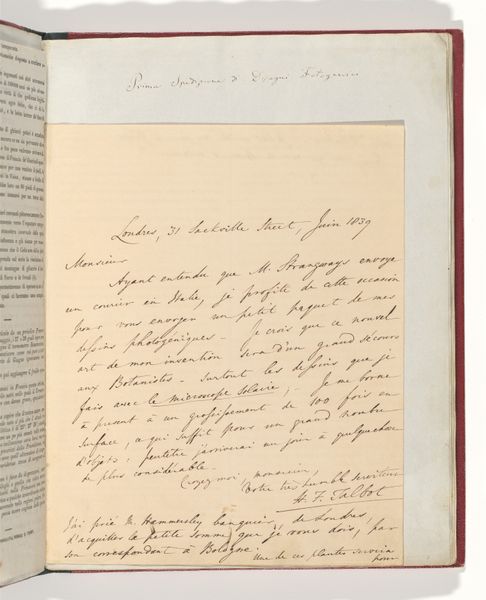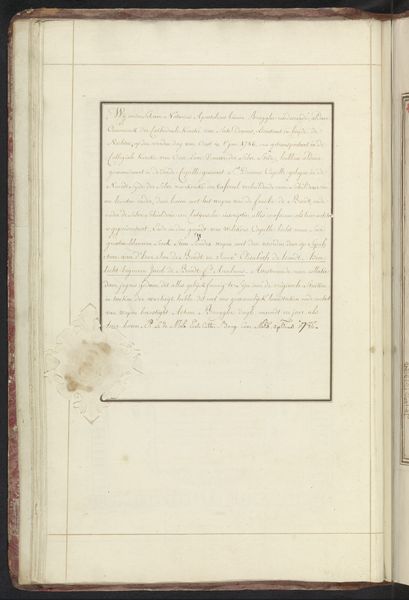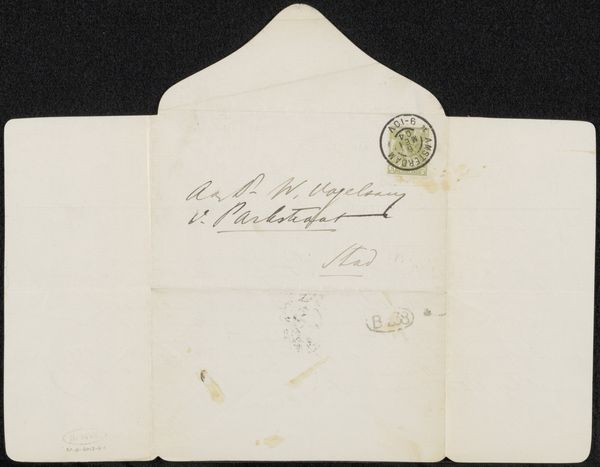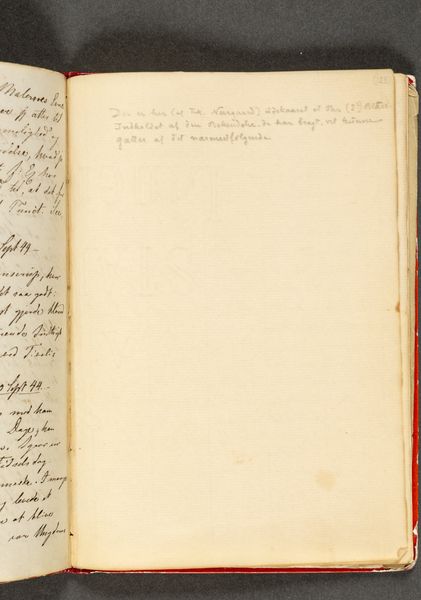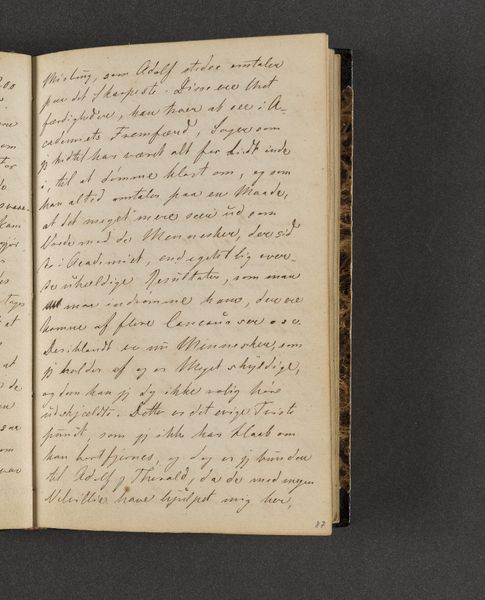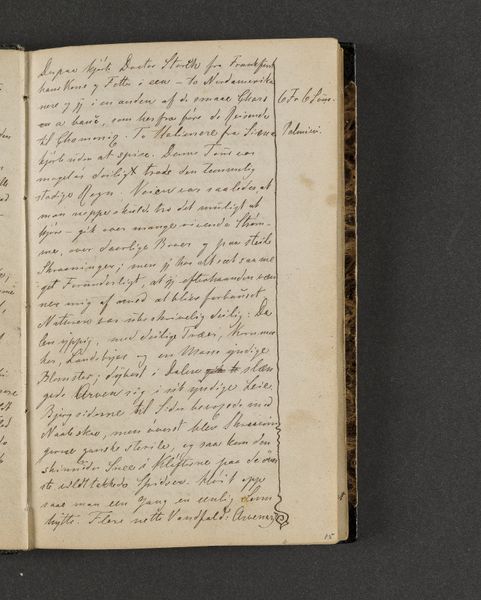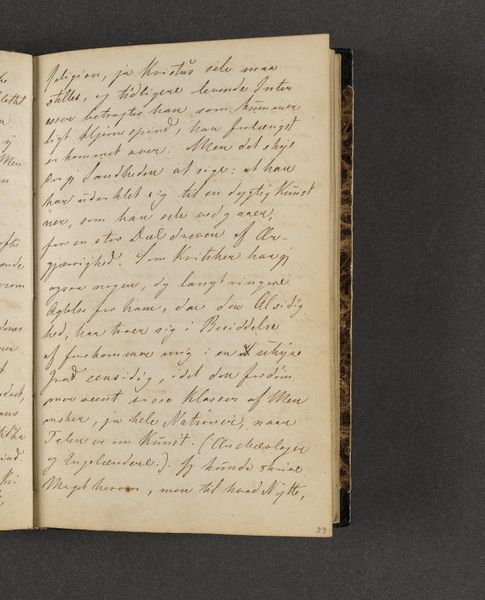
drawing, print, paper, ink
#
drawing
#
aged paper
#
homemade paper
# print
#
asian-art
#
sketch book
#
hand drawn type
#
hardpaper
#
paper
#
personal sketchbook
#
ink
#
journal
#
fading type
#
sketchbook drawing
#
history-painting
#
sketchbook art
#
calligraphy
Dimensions: height 173 mm, width 113 mm
Copyright: Rijks Museum: Open Domain
This is Bombay Government Paper 1676, made by an anonymous author in Bombay. As a manuscript, its materials are simple: paper, ink, and a wax seal. But these belie the immense power at play. Paper allowed for the proliferation of bureaucracy, making empire possible through orders, accounting, and law. Look closely, and you can see the fibers of the paper and the individual strokes of the scribe's pen. The hand-wrought character of the document underscores that this was before mass printing dominated. Consider, too, the labor involved in manufacturing the paper itself, likely from cotton rags, processed by skilled artisans. We often forget that such documents are not just about the pronouncements they contain, but about the very real human effort that went into their production. We should consider this act of labor alongside the social context of British colonialism and the consolidation of power by the East India Company. It is this convergence of materials, making, and historical context that provides a more nuanced understanding of the past.
Comments
No comments
Be the first to comment and join the conversation on the ultimate creative platform.
